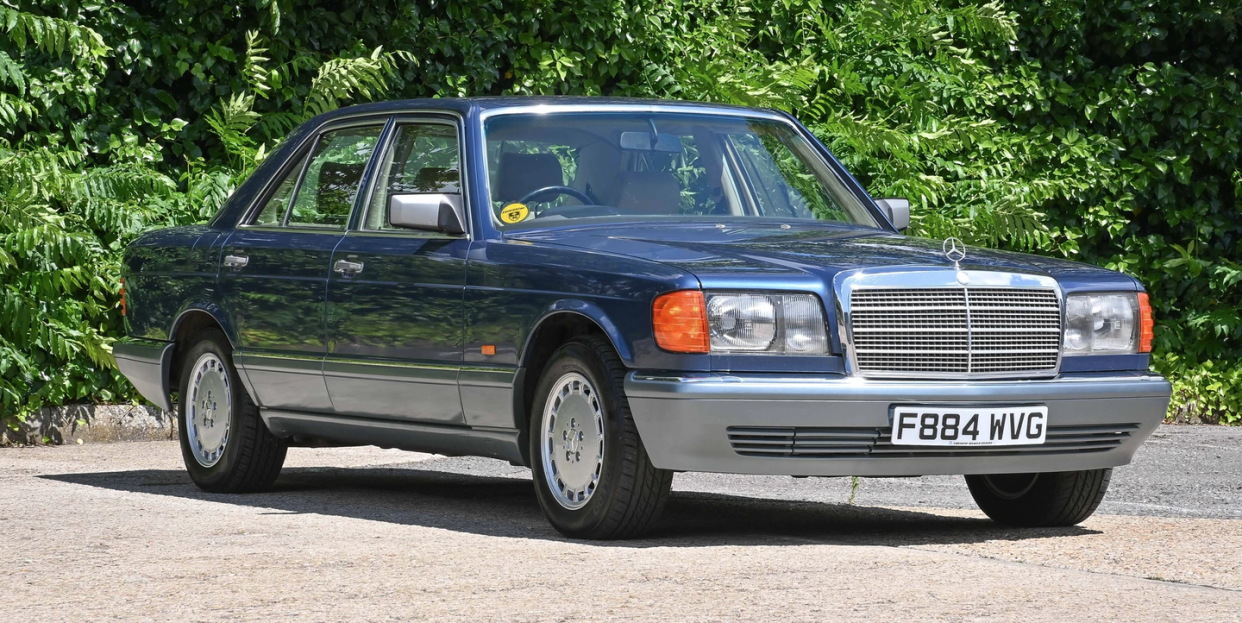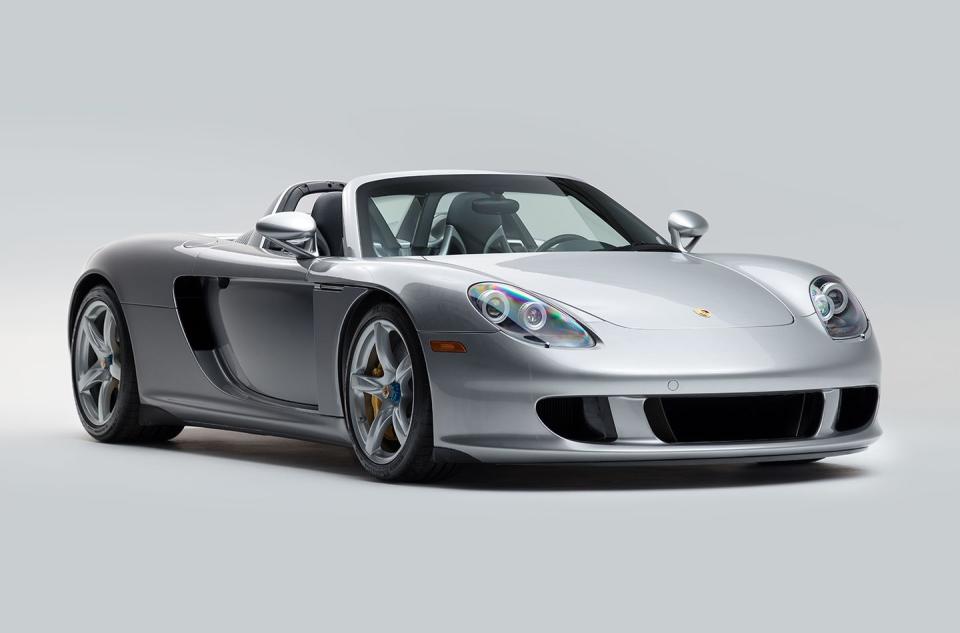In a Spectacular Classic Car Sales Year, Some Winners and Losers

Despite a decidedly unsettled economy and a continuing pandemic, it has been a banner six months for global classic car sales. In a mid-year survey by Classic.com, auction listings were up from 31,098 in the first half of 2021 to 44,417 through June 25 of this year.
In terms of dollar volume, $1.28 billion was spent in the first half of 2021, and in 2022 so far we’re at $2.16 billion. Many classic models—detailed in the report—have experienced double-digit increases in value as expressed in those auction sales. The 1986 to 1991 Mercedes-Benz 300SE (W126) for instance, is the top performer among 100 appreciating assets with a 95 percent increase from last year. At number two was, oddly enough, the 1992 to 1993 GMC Typhoon, at 83 percent. In third place was the 2004 to 2006 Porsche Carrera GT, at 80 percent.
Of course, the total spend was somewhat skewed by the fantastic $142.28 million sale of the Rudolf Uhlenhaut Mercedes-Benz 300SLR—one of just two built—in May. It was by far the most expensive car ever sold, surpassing a 1963 Ferrari GTO that traded for $70 million in 2018.
Other rapidly appreciating cars include the base-model Porsche 928 (with an automatic), the BMWs 633CSi and 540i; the first-generation Mini Cooper S convertible and the Honda S2000 CR. The survey also tracked 78 cars that lost value, and the number one depreciator was the MG-TD (down 18 percent from last year), followed by the Mercedes 280SL (down 16 percent), and the E39 BMW M5 (down 15 percent).

The results reflect the rise of highly accessible online auctions, large amounts of disposable income, low interest rates, and maybe some lingering pent-up demand from the worst COVID years, said Juan Diego Calle, CEO of Classic.com. “We have been experiencing phenomenal growth,” he said. “People who have invested in cars have done well.” The influence of online auction houses is clear, because in the first half of 2021 there were 13,026 online listings sold and so far in 2022 there have been 18,806.
Donald Osborne, CEO of the Audrain Automobile Museum in Newport, Rhode Island, also sees a healthy collector car market, but not necessarily a consistent one. “Some cars on, say, BringaTrailer.com will bring big prices, then similar ones won’t sell at all,” he said. “The online auctions are the new classified ads. We are definitely seeing more and more people in the market to buy cars. Maybe they see the turmoil in the equities market and choose to buy cars instead.”
According to Classic.com, the average sale price for cars from the 31,091 listings sold at auctions so far in 2022 was $69,318, and the sell-through rate was 70 percent. People are clearly investing in classic cars, and Calle notes a generational shift that is favoring younger buyers and cars of the 1980s and 1990s that have more creature comforts than older models and can be taken on the highway and used as daily drivers. Maybe that’s why the first-generation Lincoln Premiere from the 1950s is down 14 percent.
But some of the worst-performing cars are among the most desirable, such as the Ferrari 365 GT 2+2, the Datsun 240Z, the early Chevrolet Camaro Z/28, the Mercedes SL55 AMG, Porsche 911 SC coupe and others of that type. That could reflect their rapid price rise in previous years—some were in an unrealistic bubble. And, as Calle noted, when buyers can’t afford the model they really want, they start looking for something similar but cheaper—such as that automatic Porsche 928. Of course, that adds demand, which makes those former ugly ducklings more valuable.

“Online auctions bring a high level of transparency to the table,” Calle said. “People can discover a lot of information about cars they couldn’t get before. And that allows us to visualize the whole market and get very granular about makes and models—are people buying the manual or the automatic, the coupe or the convertible?”
So where is the market going? Calle says he thought that 2022 would see a slowing momentum, as much of the suppressed COVID demand had been met in 2021. Now he says that didn’t happen, though sell-through rates have begun to drop. There could be a shift as online auctions lose the huge advantage they had during the worst of the pandemic, he said. But online is clearly not going away, and on-the-ground auction houses such as RM Sotheby’s, Bonhams, Gooding, and Mecum are investing heavily in it, he said.
Calle said a hybrid business model, with both online and on-the-ground sales, is probably a winning formula for the near-future. But any predictions could turn out to be wrong. “It’s impossible to speak of the classic car market in a macro sense,” Osborne said.
Where do you think the classic car market is heading? Will on-the-ground sales ever return to the level of importance that they had prior to the pandemic? Share your thoughts in the comments below.
Where do you think the classic car market is heading? Do you think in-person, on-the-ground auctions will regain the importance they enjoyed before the pandemic? Share your thoughts in the comments below.

